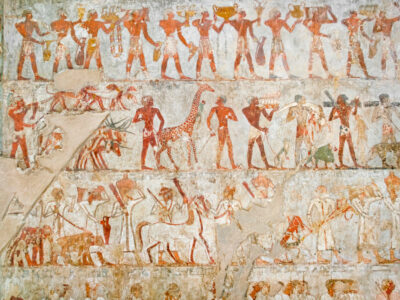Nobles Tombs in Luxor: Unearthing the Lives of Egypt’s Elite
Introduction
Luxor, known as the ancient city of Thebes, is a treasure trove of archaeological wonders , that many travelers discover during a Nile Cruise, with the Valley of the Kings and Valley of the Queens often stealing the limelight. with the Valley of the Kings and Valley of the Queens often stealing the limelight. However, nestled on the west bank of the Nile, the Nobles Tombs of Luxor offer a fascinating glimpse into the lives and legacies of Egypt’s elite. In this article, we embark on a journey to explore the Nobles Tombs in Luxor, delving into their historical context, artistic treasures, religious significance, and the untold stories of the nobles who found eternal rest in this sacred necropolis.
Historical Context of the Nobles Tombs in Luxor
The Nobles Tombs in Luxor date back to the New Kingdom period, particularly during the Eighteenth to Twentieth Dynasties (1550-1070 BC). This era witnessed an unprecedented flourishing of arts, culture, and royal patronage, which extended to Egypt’s elite nobility.
Resting Places of the Non-Royal Elite
While the Valley of the Kings housed the tombs of pharaohs and their families, the Nobles Tombs were dedicated to the non-royal elite, including high-ranking officials, administrators, and dignitaries
Individuality in Design
Unlike the standardized design of royal tombs, the Nobles Tombs exhibited individuality in their construction and decoration, reflecting the diverse tastes and preferences of their occupants.
Artistic Treasures of the Nobles Tombs
The tombs of Luxor’s nobles are adorned with exquisite artworks, intricate hieroglyphs, and vivid wall paintings that depict scenes from daily life, religious rituals, and journeys to the afterlife.
Detailed Wall Paintings: Portraits of the Past

The colorful wall paintings offer valuable insights into the nobles’ professions, social status, and religious beliefs, presenting a vivid tableau of life in ancient Egypt
Symbolic Hieroglyphs: A Language of Immortality
The hieroglyphic inscriptions within the tombs serve as a testament to the nobles’ efforts to ensure their names and achievements were immortalized, allowing them to thrive in the afterlife. Religious Significance and Funerary Practices The Nobles Tombs also held significant religious importance, with their construction reflecting the ancient Egyptian beliefs in the afterlife and the necessity of elaborate funerary rituals.
Osirian Beliefs: The Journey to the Afterlife
The nobles’ tombs featured scenes depicting the Osirian myth, symbolizing the deceased’s journey through the underworld and their eventual resurrection and rebirth in the afterlife.
Offerings and Burial Goods

Elaborate funerary rituals involved offering food, drinks, and other goods to sustain the deceased in the afterlife, ensuring their continued well-being and immortality. Rediscovery and Preservation Efforts Throughout history, the Nobles Tombs of Luxor faced threats from looters, erosion, and the passage of time. Nevertheless, modern conservation efforts seek to protect and preserve these invaluable historical sites.
Ongoing Archaeological Research
Ongoing archaeological excavations and research continue to uncover new tombs and deepen our understanding of the lives and roles of Egypt’s noble class.
Responsible Tourism
Visitors to the Nobles Tombs are encouraged to engage in responsible tourism practices, and one of the best ways to explore these sites in comfort is through a memorable Nile Cruise. Conclusion The Nobles Tombs in Luxor, though often overshadowed by their royal counterparts, offer a mesmerizing journey through Egypt’s rich history and cultural heritage. As we explore the artistic treasures, religious significance, and untold stories of the nobles laid to rest in this sacred necropolis, we gain a deeper appreciation for the diversity and complexity of ancient Egyptian society.
NileTravel Machine invites you to embark on this captivating journey to the Nobles Tombs of Luxor,and to extend your adventure with a Nile Cruise, where history and artistry intertwine, inviting us to uncover the mysteries of Egypt’s past and embrace the enduring allure of one of humanity’s most extraordinary archaeological wonders

